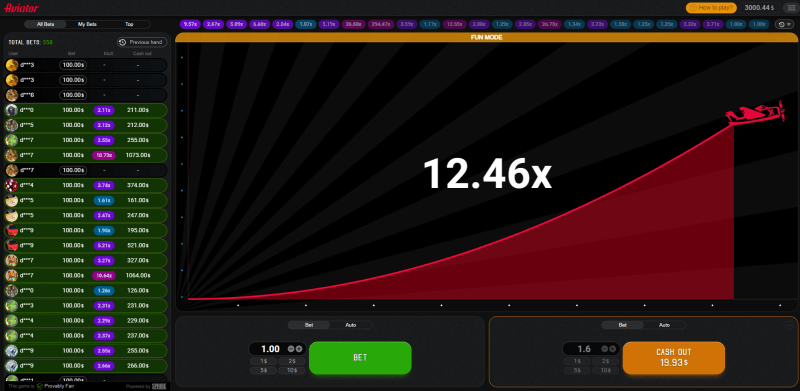Banger Casino in Bangladesh
Banger Casino is a modern gambling platform that offers games from around 40 world-famous providers. It got its license in Curacao, operates legally in Bangladesh and accepts BDT. You can access it in desktop and mobile formats.
In this article, we’ll reveal the most interesting facts about Banger. You’ll get to know how to sign up, verify your account and deposit cash. We’ll tell you which games to choose as well as how to activate promotional offers and withdraw your winnings.
Which Games You Can Launch at Banger
The entertainment catalog of Casino Banger contains hundreds of titles and keeps expanding. The top horizontal menu on the main page lets you switch between three large categories: Casino, Live Casino and VSports. In the vertical column on the left, you can select from subcategories, such as poker, bingo or lottery.

Scroll down the column on the left — and you’ll see the list of game providers. To filter the titles from a particular brand, tick its name. All these companies hire top talents and deliver products of excellent quality. No matter which game you launch, you’ll have fair odds of winning and you’ll experience an aesthetic delight.


If you’re new to gambling, you might feel a bit stressed to put real BDT at stake. Then, use your chance to practice with virtual coins! Hover the mouse over a game’s icon and you’ll see two buttons. This table sums up the difference between them:
|
Demo Mode |
Play Mode |
|
|
How many games support this mode? |
Almost all |
All |
|
Do you need to deposit real cash? |
No, you'll be placing bets with virtual coins that lack real-life value |
Yes |
|
Can you activate casino bonuses when playing? |
No — but you can access built-in bonus rounds in games |
Yes |
|
Can you win and lose real cash? |
No |
Yes |
|
How high will be the adrenaline level? |
Moderate — you'll enjoy the thrills of gambling but you won't be exposed to the risk of losing money |
High — you'll be winning and losing real cash |
Under the large advertising banner in the center of the page, there is a field that you can use to search games by their titles. To its right, there are four filters that you sort the items by:
- Alphabetic order
- Reverse alphabetic order
- Novelty
- Popularity

Now, let’s talk about each of the most popular game categories separately.
Slot Machines: from the Simplest to Cutting-Edge

Slots are the largest game category in the catalog. There are titles with low, high or medium volatility. The RTP of most of them exceeds 95%, which is a lot. The most generous machines feature jackpots — including progressive ones that keep growing from one round to another.

Each slot resembles a cartoon thanks to its superb graphics and a pleasing soundtrack. You can choose from dozens of themes, including treasures, myths, gods, beauty queens, space, animals, candies and many more. Push the button, let the reels spin and see the result!

Live Dealers: Unparalleled Emotions
If you enjoy the company of other people, try live dealer games. You won't see other players — but you can watch young and beautiful dealers and send messages to them. Dealers can host card games, table games and miscellaneous games such as the wheel of fortune. They broadcast from nicely decorated rooms that recreate the interiors of brick-and-mortar casinos, which inspires clients to gamble actively.

Betting on Virtual Sports: for Those Who Are Looking for a Change
Virtual sports are one of the latest advancements in online gambling technologies. Teams and individuals compete on various levels. However, it's not real-life sports but its imitation in a virtual reality. You don't need to be an expert in any discipline to make good predictions.

Most Played Games: Try Your Luck at the Best Titles
We already told you that you can sort titles by popularity, using the filter that is located under the right lower corner of the central ad banner. Alternatively, you can click the Popular button at the top of the left column.
You'll see which games other players launch the most frequently. There can be slots, poker, keno, arcades or anything else. It's an amazing tool for people who don't know which game to try next.

Aviator Crash Game: the Hottest Trend of Online Gambling
Most other game varieties have been around for decades if not for centuries. Aviator is one of the very few successful new kids on the block. Its outcome depends purely on luck, that's why this game is beginner-friendly.
You place a bet. A plane takes off and gains altitude. You can cash out at any moment. Sooner or later, the plane will crash. If you cash out before the crash, you'll win the sum of your bet multiplied by the altitude coefficient at the moment of cashing out. If you're late, you'll lose your bet.

Live Casino with a Bangladeshi Twist
Bangladeshi gamblers adore live dealer games with an Asian flavor. Dragon Tiger, Andar Bahar, Bac Bo and Sic Bo belong to this category. Their dealers usually come from the same region.
Special Offers, Bonuses and Tournaments
Casino Banger values its customers and wants to make their gambling experience as exciting as possible. It offers generous deposit and no-deposit bonuses to its new and existing players. Plus, it organizes tournaments with prizes.
To find out about the available bonuses, you can:
- Check advertising banners on various pages of the website
- Open the My Bonuses tab in the left column of your user profile
The selection of offers is regularly updated. Before accepting any of them, check its terms. Pay special attention to the validity period, the wagering requirements and the scope of the compatible games.
Here is the typical wagering contribution of various game types:
|
Table games, Poker, Video poker, Baccarat, Blackjack, Roulette, Lotteries, Scratch cards, Bingo, Keno, Aviator |
0% |
|
VSports, Live games and TV games |
10% |
|
Slots |
100% |
If the terms of a bonus mention a different contribution for a specific game type, you should rely on the terms and not the table above.
There is a dedicated balance for bonus funds in your wallet. When you activate a promotional offer, you’ll see bonus money on it. First, you’ll need to play with the funds from your real-cash balance. After you run out of BDT, you’ll be able to switch to the bonus balance.
ATTENTION: To transfer funds from your bonus balance to your real-money one, you’ll need to take into account the payout coefficient. Usually, it’s indicated in the terms of the bonus. Otherwise, it equals one. Multiply the payout coefficient by the amount of the bonus funds — and you’ll get the maximum sum that you can transfer to your real-money account.
As for the tournaments, you can reach them by clicking the corresponding button in the top horizontal menu of the website or in the footer. A tournament is a competition where multiple participants try to outperform each other, playing games of a particular type. Only real-cash bets are accepted. Several winners get valuable prizes, such as money or gadgets.
Welcome Bonus for Those Who Have Just Registered
To greet its new customers, Banger Casino has come up with a fascinating welcome offer. It lets you increase your initial deposit and get free spins for slots. Each individual can benefit from this offer only once. If you prefer to decline it, you’ll fail to come back to it later.
ATTENTION: The maximum amount of this gift is 300 USD. If you win more, you’ll be allowed to withdraw only 300 USD
You’ll have to wager the bonus funds within 48 hours with an x50 coefficient. Both winning and losing bets will be taken into account. You’ll be allowed to request a withdrawal after you fully wager the bonus, cancel it or run out of time for wagering it.
Claiming Your Welcome Bonus
The amount of the gift depends on how much you deposit and when:
- 5 USD or more within the first hour after signing up — and your deposit will increase by 125%
- 5 USD or more an hour or more after signing up — and your deposit will increase by 100%
- 15 USD or more, regardless of the time frame — and you'll get 250 free spins
ATTENTION: To claim the bonus, you don’t need to deposit USD. This currency is used only for calculations — and you’ll be playing with BDT.
Multi-Level Loyalty Program
Banger Casino wants to reward its loyal customers for spending so much time on the platform. You’ll get a chance to climb up a multi-level loyalty program. The only thing you need to do is to keep gambling actively for real cash.
Right now, the Banger website lacks a dedicated page with the rules of the loyalty program. Probably, it will appear a bit later. Keep an eye on the My Bonuses tab in your user profile. As soon as the casino decides to reward you with a special offer, it will be displayed there.
Steps of the Registration Process
As an unregistered user, you can explore the pages and features of the Banger Casino Online website. You’ll fail to reach only selected sections — such as the user profile. You’ll even be allowed to launch games in Demo mode to train. When you try to launch a game in Play mode, a popup window will appear in the center of the page, inviting you to register. Otherwise, you can click the Sign Up button in the top right corner of the page to access this window.
The Banger administration understands that most people want to get down to gambling as fast as possible. That’s why the registration form is very concise. You’ll only need to:
- Share your email and password
- Select the currency — BDT is the only option so far
- Accept the terms and conditions of the platform
- Confirm that you're aged 18 or older
The link to the terms and conditions is clickable. It’s highly recommended that you read this document till the end before signing up. Even though is long, it’s well-structured and contains a lot of useful information about games, bonuses and payouts. You’ll discover some details there that we don’t mention in our review.
ATTENTION: Some casinos make their new customers wait for a couple of minutes after they fill in the registration form. They send confirmation links to their emails. Banger doesn’t do that. You can sign in immediately and start gambling — which is very convenient.
The system will automatically assign a unique ID to you. It will be visible in your user profile. To enter the profile, click the icon with a human head in the top right corner. You won’t be able to edit your ID, country, time zone and currency. But you’ll be allowed to modify your email and password — as well as indicate your name and birth date.
The interface of the user profile is well thought out. It features the most important personal information about the player, without being overloaded with excessive details. In the left column, you can switch between:
- Wallet widget
- Your account information
- Transaction history
- Game history
- Bonuses
- Support chat
The transaction history is a highly useful tab. It lets you track all your deposits and withdrawals with IDs, amounts, dates, payment systems and statuses. If it seems to you that a transaction takes longer than usual, you can contact the support crew and show the data about the operation.
The game history displays the titles that you played with real cash. Sometimes, you like a game — but forget to add it to your favorites and can’t remember its name. In such a situation, open the game history — and you’ll find the title there.
The My Bonuses tab shows the promotional offers that are available personally to you and that you can activate by clicking the Get button.
With all the other buttons in the left column of the profile, everything is rather obvious.
Fast and Easy Verification
When a casino gets a license, it commits itself to international gambling standards. One of the crucial norms is verifying the identity of each new client. This measure helps to prevent money laundering, identity thefts, fraud and other types of nefarious behavior. It ensures that every gambler has come of age and is allowed to legally place cash bets.
To complete the verification, you should:
1.
Send your passport and household bill to the administration
2.
Wait for a maximum of 72 hours for the approval
Instead of your passport, you can submit an ID or another government-issued document that features your name, photo and birth date.
The household bill needs to bear your name on it and be issued no longer than 90 days ago. It will prove that you live in a territory where you’re allowed to gamble for cash.
The casino managers have the right to ask you for additional documents or a video call. It won’t take long and won’t require too much effort from you. All the customers who have good intentions successfully pass the verification.
ATTENTION: In the footer of the Banger website, there are links to the casino’s KYC & AML Policy as well as Privacy and Security norms. We recommend you read them to see that the platform will store your private data safely and confidentially.
Placing Bets with Real Cash
At Banger Casino, you can place bets with BDT and withdraw BDT to your wallets. This platform is compatible with three renowned payment systems: BKash, Nagad and Rocket. All of them process the transactions through their own gateways. It’s important to provide the highest possible safety level. In the casino interface, you only choose the payment option and indicate the amount.
Here is the general scheme for depositing and withdrawing funds:
- Open the wallet tab
- Specify the transaction type
- Choose or type in manually the necessary amount
- Indicate your phone number or wallet number
- Confirm the transaction
There are short video instructions for deposits through BKash and Nagad. You can watch them right in the wallet. Just click the dropdown menu link on the tab of the chosen system.
Here are the limits for financial operations:
|
Minimum |
Maximum |
|
|
Deposit |
400 BDT |
20,000 BDT |
|
Withdrawal |
1,000 BDT |
20,000 BDT |
Three Deposit Methods
BKash, Nagad and Rocket allow you to deposit BDT on your gambling balance. Deposits are normally instant or almost instant. The system will offer you three amounts: 400, 600 or 800 BDT. It’s not necessary to stick to them. Feel free to type in another sum within the acceptable limits range.



Three Withdrawal Methods
The withdrawal options are the same as their deposit counterparts: BKash, Nagad and Rocket. You’d better withdraw your winnings through the same system that you used to make your deposits. People who launder money tend to switch between multiple payment methods, that’s why such behavior can raise the administration’s concern.
ATTENTION: Before requesting a withdrawal, you should play through the funds that you deposited.
Many casinos don’t allow their clients to ask for withdrawals if they have active bonuses. If they neglect this rule, their bonuses will be canceled. At Banger, you might be allowed to withdraw ⅓ of what you have on your real-money balance if you have an active bonus. However, it depends on the terms of the offer.
After you create a withdrawal request, the administration will approve it within 24 hours. Then, the payment system will process it within 48 hours. In total, be ready to wait up to 72 hours. However, you might receive your prize sooner.
Mobile Banger
Banger enables you to gamble on the go, at any time of the day or night, regardless of your current location. Its mobile version is identical to the desktop one in terms of functionality. The difference lies only in the interface that adapts to the compact screen of a mobile device.

ATTENTION: Banger prohibits creating multiple accounts per person. You should sign in with the same user data on all devices.
You can open the casino’s website in your smartphone’s browser. Alternatively, you can install its app for iOS or Android. Apps tend to be slightly less sensitive to the speed and stability of your Internet connection.
For Android Devices
If you want to download the Banger Casino Android app, ask the support team to send you the link. You’ll get the file from the most reliable source. It should be compatible with several recent versions of the operating system.
For iOS Devices
To install the Banger Casino app on your iPhone, ask the support crew to share the download link with you. The app is safe to use and will occupy little space in the device’s memory. To benefit from it, it’s not necessary to have the iPhone of the latest model. It’s enough to update its operating system to one of the latest versions.
Reasons to Sign up for Banger
You may want to sign up for Banger because this online casino:
- Is licensed
- Always plays fair
- Is available in a desktop and mobile version
- Accepts BDT
- Has a modern design and user-friendly interface
- Features hundreds of games
- Buys games from well-known providers
- Offers generous bonuses
- Organizes exciting tournaments
- Is compatible with BKash, Nagad and Rocket
- Ensures fast and secure financial transactions
- Provides prompt and professional customer support
Banger has an impeccable reputation and customer reviews about it have been largely positive.
Licensing and Safety Measures
Banger was licensed in Curacao. This document enables it to cater to the residents of many countries, including Bangladesh. The presence of a Curacao license means that:
- The platform has enough funds to function and pay out the winnings
- Its team has the necessary expertise to run the business
- Banger ensures maximum confidentiality of its customers' private data
- All clients have equal odds of winning and the outcome of games is random
- From a technical viewpoint, the casino is modern and is unlikely to suffer from bugs
Your user profile doesn’t display any sensitive information about you. Even if someone looks at your profile data, they won’t discover your passport number or payment credentials there.
ATTENTION: Banger Casino accepts independent audits. Third-party experts check whether the platform guarantees the integrity of all games.
Ways to Get in Touch with the Support
Whenever you have a question, you can submit it via:
- Live chat on the Banger website. It tends to be the fastest way to get an answer or a consultation. Probably, you'll need to wait for only a few seconds for the operator. However, if the team has to deal with too many simultaneous requests, you might need to wait a bit more.
- Consider using email if you want to save the history of your dialogs with the support in your inbox. The speed of response can be slightly lower than in the chat — but not too slow anyway.
- Social networks. Scroll down the main Banger page to the footer — and you'll see the links to the casino's Instagram and Telegram. These channels come in handy not only for communication. You can use them to stay aware of the project's news and offers.
The support team speaks fluent English. They know the casino practices inside out and will provide you with comprehensive answers.
Conclusion
Casino Banger in BD/Bangladesh is a worthy gambling platform where you can place bets with BDT and win this currency. All players have equal chances because it’s a legal casino. It got its license in Curacao and accepts only clients aged 18 or older.
Banger boasts a modern design and a sleek interface. You can open it on your computer or mobile device. The sign-up process takes only a few seconds — immediately after that, you can deposit cash and start playing. If you wish, you’ll be able to train for free first. The collection of games contains hundreds of titles from around 40 developers.
The casino processes deposits and withdrawals through three payment methods: BKash, Nagad and Rocket. The transactions take place through the gateways of these systems and are highly secure. When you win cash, Banger will transfer the prize to you quickly and honestly.
Frequently Asked Questions
How safe is Banger Casino in Bangladesh?
Banger is one of the safest online gambling platforms in Bangladesh. It got its license in Curacao and it cooperates with three credible payment systems: BKash, Nagad and Rocket. It buys games from renowned providers and thoroughly complies with industry regulations when carrying out its activities.
Which security measures does Banger use?
We recommend you read the platform’s KYC & AML Policies as well as Privacy & Security norms. The links to both documents are located in the footer. In a nutshell, Banger is a licensed casino that ensures fair play and keeps its customers’ private data fully confidential. The games are equipped with random number generators. All new customers need to verify their identities to prevent illegal activities.
Which slots are the most popular?
To find out about the best slots, click the Popular button in the left column on the main page. You’ll see the selection of games of all genres — but the majority of them will be slots. They differ greatly in their level of difficulty, volatility, theme and features. You’ll definitely find something for your taste there. The selection is regularly updated.
What about exclusive titles?
Banger Casino buys its games from around 40 well-known developers. It’s quite possible that they will offer exclusive titles to the platform one day. Most likely, there will be a label on these games’ icons and a dedicated section in the catalog can be created for them.
How can players reach out to the support team?
Sign in and open the support chat from your user profile or from the main page. Usually, it’s the fastest way to get an answer to your question. Besides, you can send an email or contact the team through Instagram or Telegram. The links to both networks can be found in the footer.
How long will I need to wait for the response?
If you have an urgent question, submit it through the live chat. The support crew will try to attend to you in a few seconds. If you prefer email or social networks, you might need to wait a bit longer.